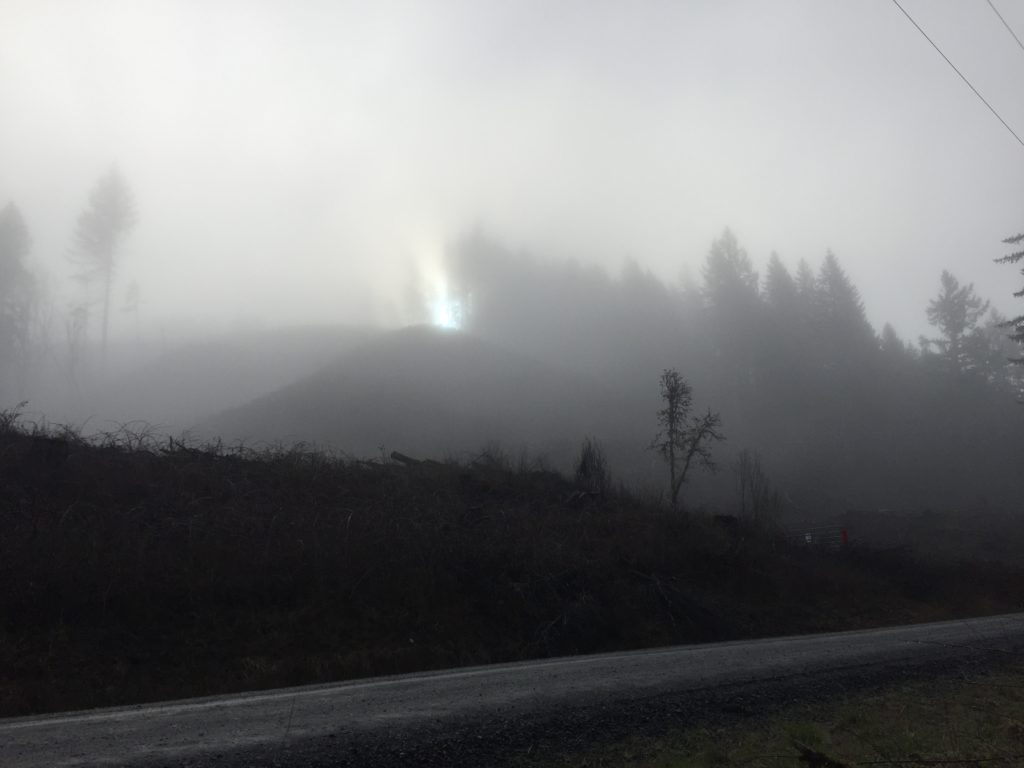
Frequently, when I write about life on the farm I describe how different it is from life in the city. While doing so, I’ve talked about how quiet it is and how I’m surrounded by so many different species of wildlife. However, I haven’t said a word about the weather.
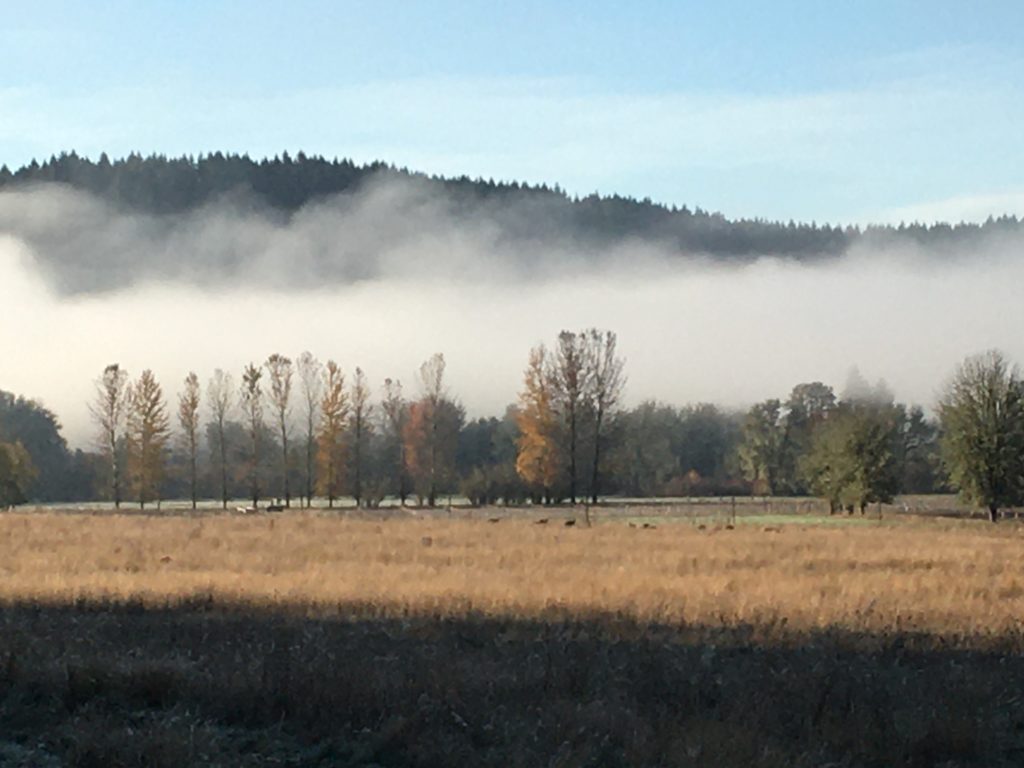
While our farm might be located in a ecotone between the Willamette Valley and the Coast Range, weather-wise we’re pretty similar to Portland. Any differences, if there are any, feel slight. For instance, since we’re in the country surrounded by trees and vegetation (instead of buildings, streets, and sidewalks), we’re not in the middle of a heat island. As a result, summers feel cooler on the farm compared to the city. Plus, once the sun goes down I’ve noticed the temperature drops quickly. (On top of that, the farm is in a small valley, so sunset occurs a bit earlier when compared to a lot places around here.) Based on the anecdotal evidence, Pedee gets a bit chillier in the winter compared to Portland and the rest of the Willamette Valley. Overall however, in the two years I’ve lived here the weather is about the same as Portland’s. Except for one thing — the fog.
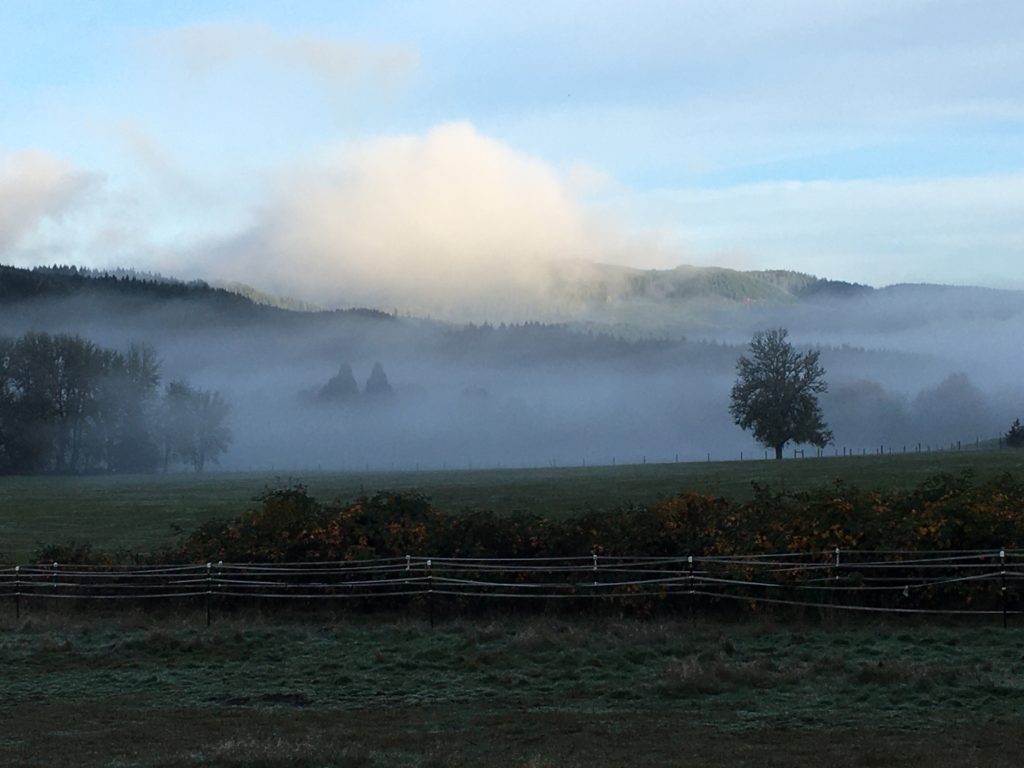
Trust me, it’s not like I’d never seen fog before. But around here we get a lot of it.
But there’s one type of fog that really fascinates me. A few days after moving here, I was helping put the finishing touches on our new horse track when off in the distance, just as the sun was setting, I could see a fog bank slowly materialize out of nothing. Previously, I always thought fog rolled in off the water or descended from the clouds or something; but this fog just seemed to come right out of the ground. This eerie occurrence happens regularly, and I always stop what I’m doing and marvel at it. (I’m sure there’s some type of scientific explanation for all of this—like, as moist air near the ground cools off and condenses, it becomes fog—but for now I’ll leave that for the meteorologists to explain.*)
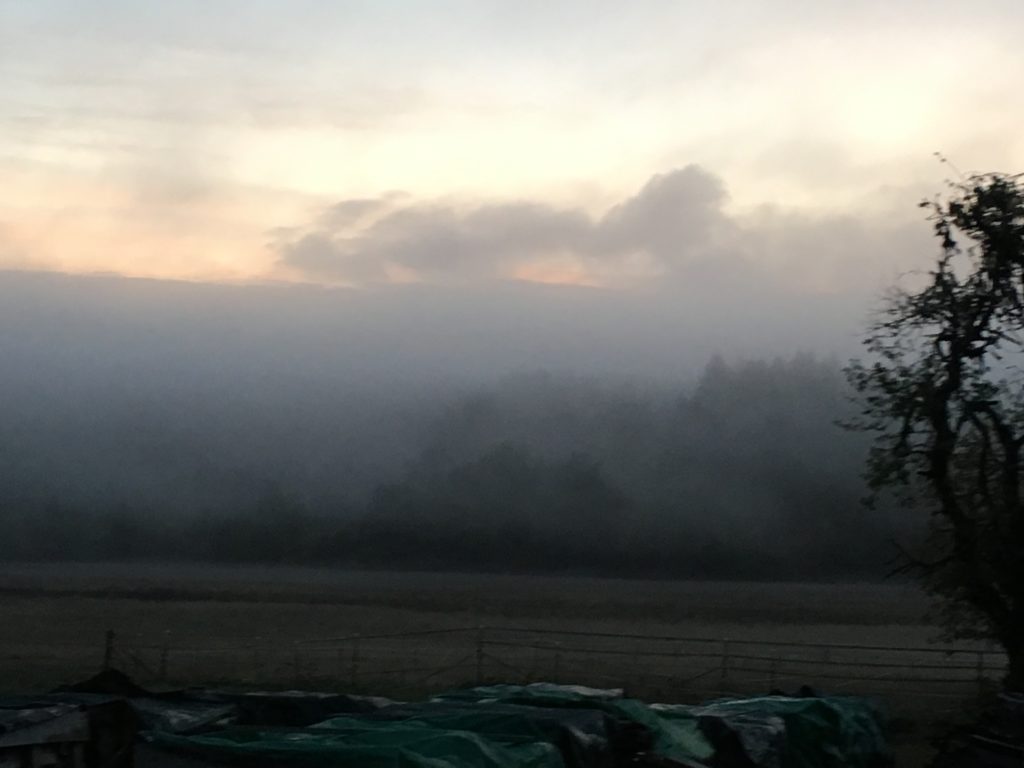
Fortunately, unlike extreme heat or cold, or heavy rain or snow, an overabundance of fog won’t necessarily harm you. (Although if you talk to anyone whose plane was delayed by fog, they’ll have serious things to say.) However, on foggy evenings one needs to be careful while driving because of the lower visibility and to keep a sharp eye out for deer since since they have a nasty habit of darting across the road when you least expect it.
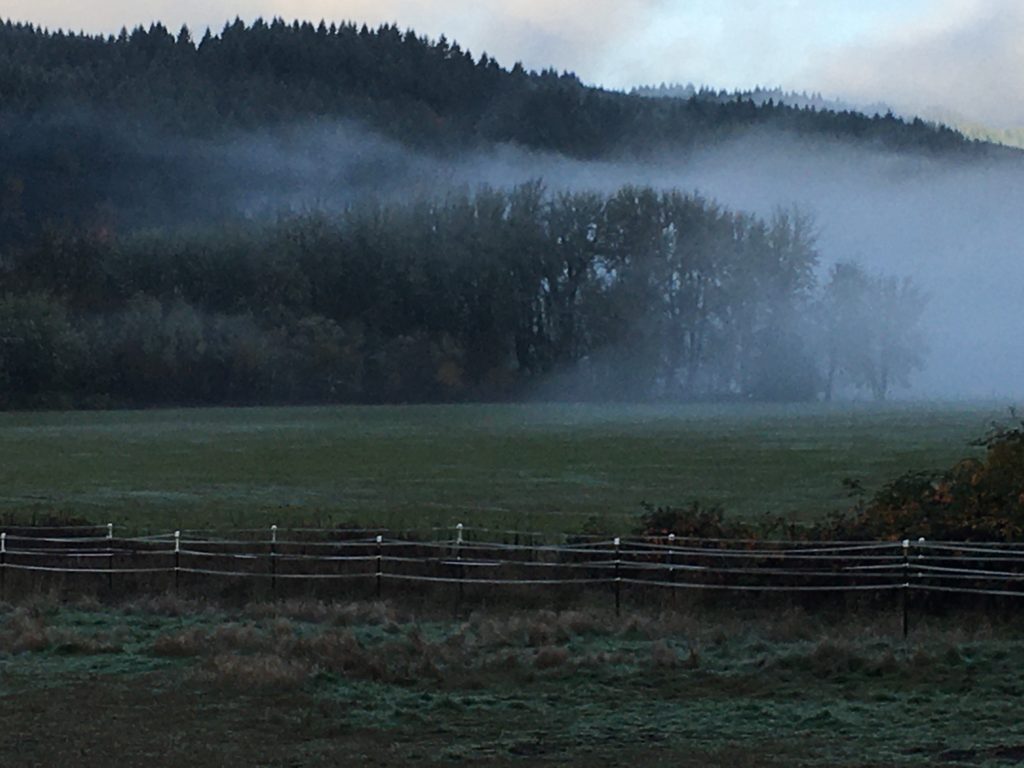
This abundance of fog definitely creates atmosphere (pardon the pun), especially at night when, like a film noir scene, it’s so thick and low to the ground I can’t see the lights of our neighbor’s house, or even that of our own farmhouse mere feet away.
Amorphous, ethereal and mysterious, does it envelop and isolate us without permission or warning, or does it come to embrace us like a comfortable blanket on a chilly night?
Bob Dylan once said you don’t need a weather man to know which way the wind blows. Perhaps it’s all in the eye of the beholder.
* Ground fog, or radiation fog, forms when the land cools after sunset in calm conditions with a clear sky. The cooling ground then cools adjacent air, causing the air temperature to fall and reach the dew point, forming fog. Radiation fog occurs at night usually does not last long after sunrise, but it can persist all day in the winter months, especially in areas bounded by high ground. Radiation fog is most common in autumn and early winter. Source: Wikipedia.
